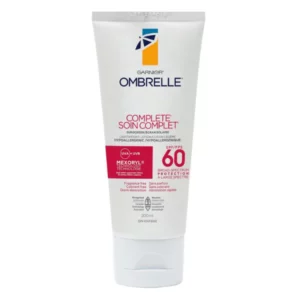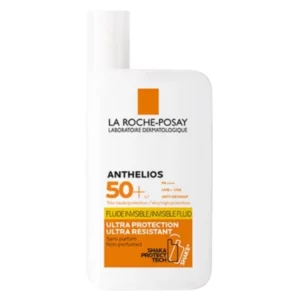For sunscreen aficionados, Mexoryl is a gold standard in sun protection, but did you know that are two different Mexoryl molecules – Mexoryl SX and XL? Read on to find out about the benefits of Mexoryl.
What is Mexoryl Technology in Sunscreen?
Mexoryl SX (ecamsule or terephthalylidene dicamphor sulfonic acid) and Mexoryl XL (drometrizole trisiloxane ) are two sun filters that have been developed and patented by L’Oreal. They are often combined together, along with other sun filters to deliver the ultimate in broad spectrum sun protection.
Both Mexoryl SX and Mexoryl XL are photostable, meaning that they do not degrade in sunshine, delivering effective and long-lasting protection. Mexoryl SX provides protection against UVA rays, which are deep penetrating, cause premature aging and the most dangerous to skin. Mexoryl XL protects skin against the damaging effects of UVB and UVA radiation, which can lead to sunburn, premature aging and an increased risk for skin cancer.
As shown in a study¹, the combination of Mexoryl XL and Mexoryl SX produces an effect greater than the sum of their separate effects (syngeristic), leading to increased UV protection. It’s one of the reasons that they are often recommended by dermatologists.
Is Mexoryl a Good Suncreen?
While the Mexoryl molecules deliver formidable protection on their own, you’ll frequently find them combined with other sun filters such as titanium dioxide (which blocks UVB rays), avobenzone (which absorbs the full UVA spectrum) and newest darling of the sun filter world, Tinosorb S (which covers both UVA and UVB rays as well as functioning as a stabilizer for other sun filters). More can be found on Tinosorb S here.
While we’re all concerned about sunburn, which is caused by UVB rays, it’s the longer and deeper penetrating UVA rays, that are more dangerous to skin. UVA damage isn’t immediately visible, but it does genetically damage cells. And this is where Mexoryl SX shines. It provides protection against UV radiation in the 290-400 nm wavelength range, essentially covering the entire UVA range plus much of the UVB range. That’s a lot of power in one molecule!
You can find Mexoryl SX and/or Mexoryl XL in Anthelios and Ombrelle sunscreens. And if you need help choosing one to suit your needs and lifestyle, call us! We’re always happy to talk sunscreen.
Is Mexoryl Safe?
Both Mexoryl SX and Mexoryl XL have been shown to be safe for human health. They’ve also been shown to be well tolerated, hypoallergenic and suitable for sensitive skin.
Important to note as well, is that even at concentrations higher than those found in the sea, Mexoryl XL is not toxic to coral reefs².
Does Mexoryl Last All Day?
Pick up any sunscreen bottle and it will be labelled to be reapplied every two hours throughout the day. The same applies to Mexoryl sunscreens.
While it’s especially important to apply enough sunscreen and to reapply after sweating, swimming or towelling off, it’s not always practical to reapply every two hours.
For most of us, a morning and then, midday application—to exposed arease—is likely adequate. This is especially important during the summer or in warmer climates. Keep in mind that this is a practical rule of thumb and NOT what is recommended on sunscreen labels themselves. If you aren’t sure, check with your dermatologist.
(1) Moyal D., Prevention of ultraviolet‐induced skin pigmentation. Photodermatology, Photoimmunology & Photomedicine, 2004, 20: 243-247
(2) Fel, JP., Lacherez, C., Bensetra, A. et al. Photochemical response of the scleractinian coral Stylophora pistillata to some sunscreen ingredients. Coral Reefs 2019 38, 109–122.






